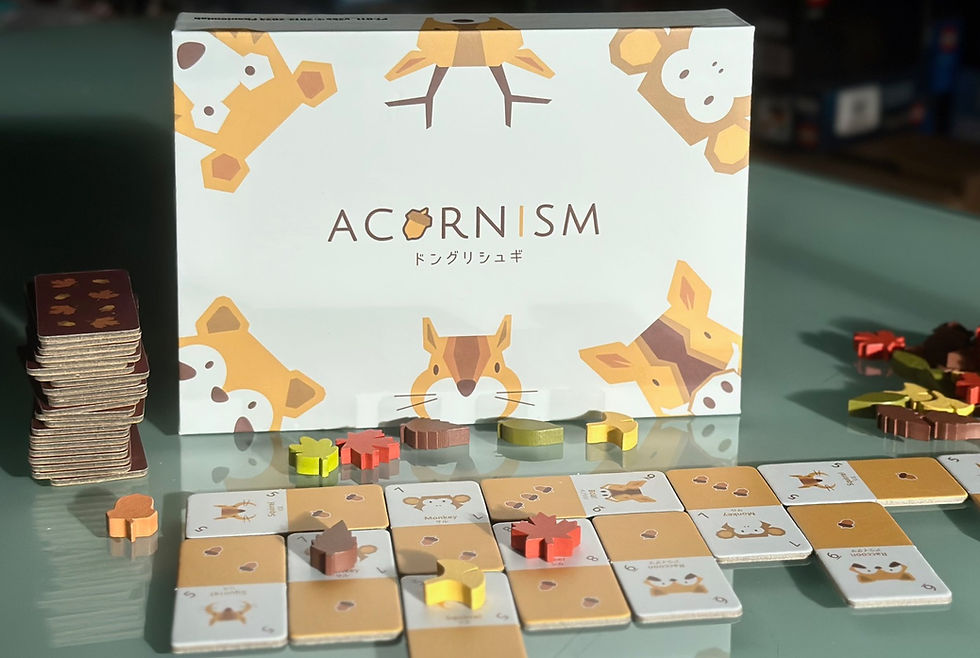Spirits of the Forest
- Board's Eye View

- Dec 26, 2017
- 3 min read
This is a new game from Thundergryph, due to launch on Kickstarter in a week's time. There’s some background nonsense about sprites and nature, but, make no mistake, Spirits of the Forest is essentially an abstract strategy game.
It’s a jolly good game too, not least because it has an elegant simplicity that makes it easy to learn and play, and it plays in around 15–20 minutes. It’s only after you’ve played it through a couple of times that you appreciate the subtlety of the strategies involved in winning the ‘best’ tiles to collect the spirit icons needed for the ‘set collection’ end-game scoring.

In Spirits of the Forest, the 48 tiles are shuffled and laid out at random in a grid made up of four rows of 12 tiles. Bonus tokens are placed face down on eight of the cards. On their turns, players take from either end of the grid (ie: from any of the eight end tiles) a tile with two icons on it or up to two tiles of the same colour that each has on it only one icon. Players lay out their collected tiles in sets (sorted by colour), so opponents can see each other’s tiles, though not what bonus tokens their opponents have collected. There will be complaints that the colours of the tiles are not all distinctive enough. However, the colours are just one way of distinguishing the tiles: each colour corresponds to a different ‘spirit’ icon, so colour-blind players or those straining to play in low light can focus on the icons rather than struggling with the tints.
Players start the game with two gemstones (three in a two-player game). As a second action each turn, players have the option of placing one of their gems on a tile on the grid in order to ‘reserve’ it. If they take that tile on a subsequent turn, they regain their gemstone. An opponent can still take the ‘reserved tile’, returning the gemstone to its owner, but only at the cost of permanent loss of one of their own gemstones. It is the positioning of gemstones that give this game its strategic edge as players use them initially to prevent an opponent from benefitting from an advantageous pick (typically one that will yield a bonus token) and weighing up when to time their go-for-broke sacrifice of gemstones in order to nab a highly beneficial 'reserved' tile…
The game comes down to set collection in the end. There are nine different ‘spirit’ symbols (one or two on each colour tile) and there are three ‘power’ symbols that appear across the tiles of all colours. At the end of the game, only the player with the largest number of each icon will score for it, scoring for the number of icons he has: so if I end the game with four ‘dewdrop’ icons and my opponent has three, I score four points for that icon and my opponent scores none. When bonus tokens are revealed, these may boost the number of icons a player has. Players lose three points for any icon they don’t have, so the final stages of a three- or four-player game can be quite cutthroat!
The woodland theme of Spirits of the Forest may be mere veneer but, to the publishers’ credit, Thundergryph have endorsed the theme by pledging to plant a tree for every game they sell in 2018! And tho’ this is an abstract game, the forest motif does contribute to its appeal. Set it up and this game will attract the interest of passers by. They’ll watch you play a couple of turns and they’ll feel ready and eager to jump in and play themselves. That in itself is a good sign. If, despite this, you still find yourself without an opponent, however, the rules offer a playable solitaire game as a variant.




